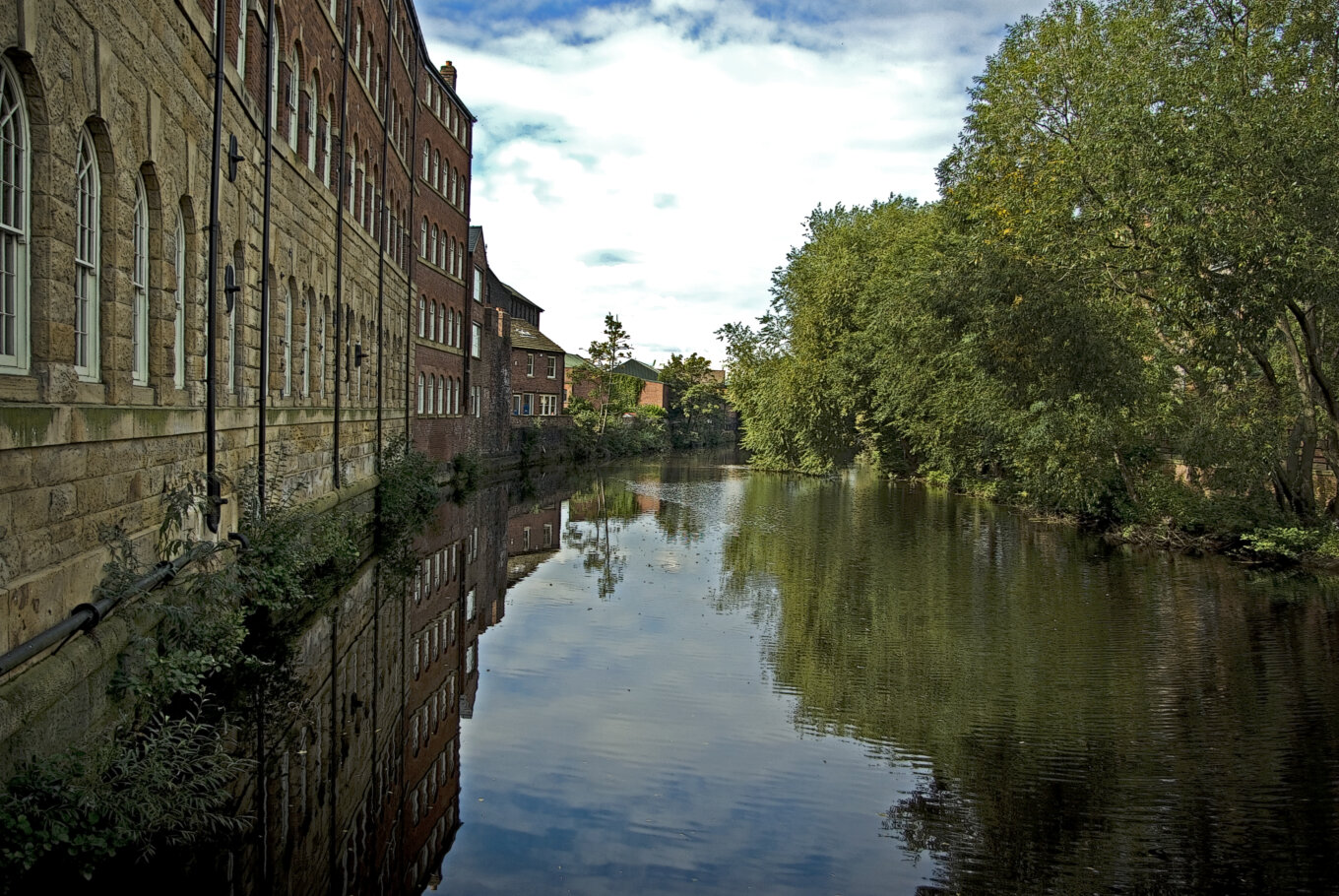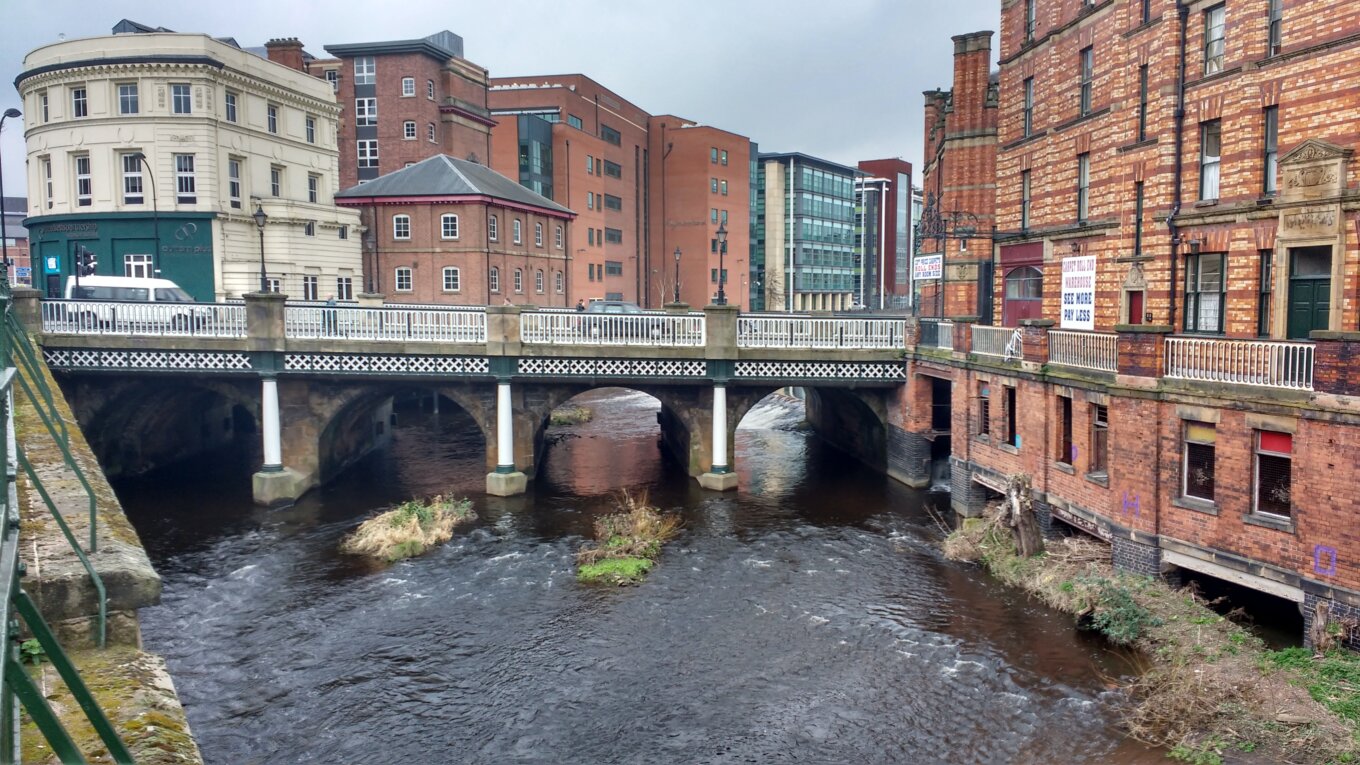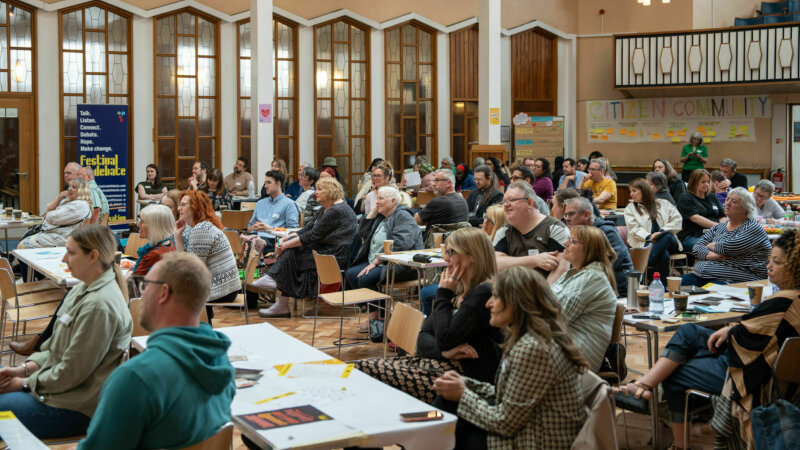Should we be guardians of nature? A historical and philosophical dive into the Rights of Nature movement
The question of whether nature should have rights is cropping up more in both public and political debate, in particular for the River Don. Where did this movement come from and what does nature having rights actually entail?

River Don from Ball Road Bridge
Sheffield TigerRights of Nature as a concept can be traced back to Indigenous peoples and their relationship to their natural environment. Indigenous groups are varied and diverse in their beliefs, but a common theme is often a deep respect for nature and regarding it as an extension of their ancestry. Yet, the concept of ‘rights’ is entirely intrinsic to, and created by the Western world.
As a result, Rights of Nature tries to capture this innate bond Indigenous peoples have with the natural world through the adaptation of their belief system, so it can be understood and applied by Western culture.
The idea of nature having rights recognises that our ecosystem - including animals, mountains, oceans, rivers, and trees - has rights in the same way humans do. The movement acknowledges all of nature as living beings, and as a collection of ‘beings’ it is therefore entitled to rights and protection in the same way people are.
Going further, the movement aims not to treat nature as property to be legally owned, but instead to grant it the legal right to exist, and to be maintained and regenerated for future generations. We as humans in return have a moral obligation and duty to enforce and uphold these rights on behalf of the ecosystem. In a sense, we would take the role of a guardian.
Currently, the idea that humans should be prioritised is dominant. In philosophical terms, these are known as ‘anthropocentric’ views, centring humans. Rights of Nature asks us to challenge our usual ways of thinking and take a more ecocentric view.
'Ecocentrism’ places nature at the centre of all decisions. By accounting for the natural world and its needs first, this allows all species to thrive including humans. The argument stands: protecting nature in turn protects us.
Examples of Rights of Nature in practice
The Rights of Nature movement takes form by granting environmental personhood - giving a non-human entity protections and legal status - which is a part of the broader shift to recognising and respecting the wider rights of nature.
The practical application of Rights of Nature is still a relatively new notion, with the first real example taking place in 2008 when Ecuador recognised Rights of Nature in its constitution. The constitution stated: 'Nature or Pachamama, where life is reproduced and exists, has the right to exist, persist, maintain and regenerate its vital cycles, structure, functions and its processes in evolution’.
More recently Panama passed a Rights of Nature Law (Law 287) in 2022, which played a part in ruling the Cobre Panama copper mine unconstitutional in 2023. Panama's Supreme Court took an ecocentric viewpoint reaffirming that nature is a subject of rights that should be protected, maintained, restored and able to regenerate.
Similar constitutional actions have so far taken place in Bolivia and Uganda.

River Don, Sheffield
Jeremy HallsArguably the most well known environmental personhood is the Whanganui River in NewZealand, which gained this status in 2017 giving the river the same rights as a human. The Maori peoples fought for more than 160 years for this legal protection.
The Maori proverb “ko au te awa, ko te awa ko au” means “I am the river, the river is me”, which highlights the deep-rooted kinship Maori people share with the waterway.
The recognition of the river as a ‘person’ allows the river to take legal action if there are threats to its waters, including pollution or unauthorised use. Two representatives are appointed to act on the river's behalf, one from the crown and one from the Whanganui iwi.
The world looks to New Zealand as it awaits its first lawsuit to see how this legislation actually plays out when the time comes.
Since then the Yurok tribe in California has granted the same rights to the Klamath river, and Bangladesh has followed suit and granted similar rights to all of its rivers.
Yet there is still a clear gap in granting Rights of Nature in Europe, and the UK government has opposed the idea as they don't currently recognise nature as a legal entity which can be granted rights.
Push for Rights of Nature in South Yorkshire
There has been a big push for the River Don to be the first entity to be granted environmental personhood after being dubbed one of Europe's most polluted rivers in the 1980s. The River Don Project unites a range of groups who aim to achieve rights for the Don. Now Then’s colleagues at the River Don Project aim to create the conditions for new legal, economic and democratic frameworks for the rights of nature in South Yorkshire, to tackle issues including water pollution.
The project emphasises that by ‘attaining enhanced rights for the River Don we want to change the way we interact with and value the river - socially, economically, politically and environmentally.’







